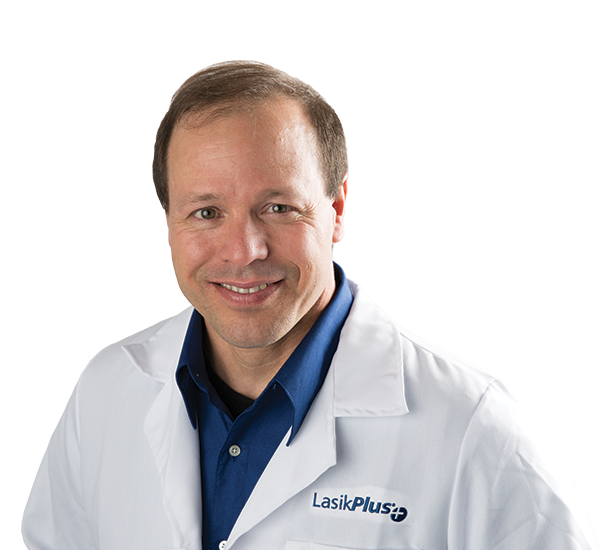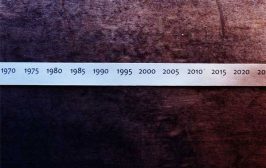-
Summer Savings: Save 20% On LASIK , Find More
*Must mention this promotion and be treated in August of 2024 to qualify. 20% off standard price of Wavelight procedure. Cannot be combined with any other offers.
- Home >
- Lasik Resources >
- Articles All About LASIK >
- How Has LASIK Changed Over Time?
How Has LASIK Changed Over Time?
A patient’s age can affect the type of LASIK he receives and the outcome of that treatment. While each person is unique, I’ve used the following guidelines over the course of performing more than 75,000 laser vision correction procedures.
LASIK for Patients Aged 18 to 38
Since LASIK is an elective procedure, there is no rush to treat anyone. During the teen years and early 20s, a patient’s eyes may change dramatically. To be considered a candidate for LASIK, a patient must be at least 18 years old and have a stable eyewear prescription.
Age and prescription stability are only two of the factors doctors consider when assessing LASIK candidacy. They also look at the patient’s goals for the procedure, eye health, overall physical health, occupational needs, corneal shape and thickness, myopia versus hyperopia and other factors. All these help the doctor determine the safety and efficacy of the proposed procedure.
LASIK for Patients Aged 39 to 59
As patients near their 40s, presbyopia becomes a factor in their vision correction needs. Presbyopia refers to age-related changes to the lenses inside the eyes, which makes it more difficult to focus on nearby objects. Monovision LASIK is one possible option for patients with this condition. During the procedure, the doctor corrects one eye for distance vision and the other eye for up-close vision.
Admittedly, monovision does sound strange. And although it does take time for patients to adapt, most of them are happy with the results. If a patient is considering monovision LASIK, the doctor may do a “trial” with glasses or contact lenses to test if this new way of seeing works prior to treatment.
LASIK for Patients Aged 60+
Patients in their 60s and beyond often begin to develop cataracts. If their cataracts are slow growing, and the patient’s refractive error is relatively mild, laser vision correction may be great for them. Their doctor would determine whether the LASIK would be performed before or after cataract surgery.
I do not consider there to be an upper age limit for laser vision correction. I have treated patients in their 70s and 80s with the goal of reducing their dependency on glasses or contacts. One of my happiest patients is a man in his 80s who no longer needs glasses after wearing them for 68 years.
While important, a person’s age is only one factor affecting her vision correction needs. Only a thorough eye exam and consultation with a qualified eye doctor can fully determine if LASIK is the best choice.
YOU MIGHT ALSO LIKE...
-
City Match
Athens, Ohio
-
City Match
Lewis Center, Ohio
-
City Match
Delaware, Ohio
-
City Match
Columbus, Ohio
-
City Match
Columbus, Ohio
-
City Match
Indianapolis, Indiana
-
City Match
Indianapolis, Indiana
-
City Match
Indianapolis, Indiana
-
City Match
Indianapolis, Indiana
-
City Match
Indianapolis, Indiana
-
City Match
Indianapolis, Indiana
-
City Match
Las Vegas, Nevada
-
City Match
Houston, Texas
-
City Match
Eau Claire, Wisconsin
-
City Match
Oshkosh, Wisconsin
-
City Match
Kenosha, Wisconsin
-
City Match
Indianapolis, Indiana
-
City Match
Indianapolis, Indiana
-
City Match
Vancouver, Washington
-
City Match
Boulder , Colorado
-
City Match
Aurora , Colorado
-
City Match
Colorado Springs, Colorado
-
City Match
Santa Fe, New Mexico
-
City Match
Gainesville, Florida
-
City Match
St. Augustine, Florida
-
City Match
Evanston, Illinois
-
City Match
Greenwood , Indiana
-
City Match
Waco, Texas
-
City Match
Arlington, Texas
-
City Match
Loudoun County, Virginia
-
City Match
Sarasota , Florida
-
City Match
Austin, Texas
-
City Match
Austin, Texas
-
City Match
Austin, Texas
-
City Match
Austin, Texas
-
City Match
Austin, Texas
-
City Match
Jacksonville, Florida
-
City Match
Plantation, Florida
-
City Match
Tampa, Florida
-
City Match
Altamonte Springs, Florida
-
City Match
Saratoga Springs, New York
-
City Match
Atlanta, Georgia
-
City Match
Atlanta, Georgia
-
City Match
Atlanta, Georgia
-
City Match
Hartford, Connecticut
-
City Match
New York, New York
-
City Match
Las Vegas, Nevada
-
City Match
Scottsdale, Arizona
-
City Match
Scottsdale, New York
-
City Match
Scottsdale, Arizona
-
City Match
Houston, Texas
-
City Match
Houston, Texas
-
City Match
Houston, Texas
-
City Match
Houston, Texas
-
City Match
Mesa, Arizona
-
City Match
Sandy, Utah
-
City Match
Ogden, Utah
-
City Match
Houston, Texas
-
City Match
Provo, Utah
-
City Match
Brooklyn, New York
-
City Match
Brooklyn, New York
-
City Match
Brooklyn, New York
-
City Match
New Jersey, New Jersey
-
City Match
New York, New York
-
City Match
New Jersey, New Jersey
-
City Match
Wilmington, Pennsylvania
-
City Match
New Jersey, New Jersey
-
City Match
Lancaster, Pennsylvania
-
City Match
Paramus, New Jersey
-
City Match
York, Pennsylvania
-
City Match
Bozeman, Idaho
-
City Match
Nampa, Idaho
-
City Match
Salem, Oregon
-
City Match
Renton, Washington
-
City Match
Renton, Washington
-
City Match
Cleveland , Ohio
-
City Match
Columbia, Maryland
-
City Match
Renton, Washington
-
City Match
Florida, Florida
-
City Match
Florida, Florida
-
City Match
Overland Park, Kansas
-
City Match
Topeka, Kansas
-
City Match
Arizona, Arizona
-
City Match
Washington, Washington
-
City Match
Garden City, New York
-
City Match
Madison, Wisconsin
-
City Match
Boca Raton, Florida
-
City Match
New York, New York
-
City Match
Tucson, Arizona
-
City Match
Charlottesville, Virginia
-
City Match
Amherst, New York
-
City Match
Billings, Montana
-
City Match
Southfield, Michigan
-
City Match
Virginia Beach, Virginia
-
City Match
El Paso, Texas
-
City Match
Syracuse, New York
-
City Match
West Palm Beach, Florida
-
City Match
Greenville, South Carolina
-
City Match
Durham, North Carolina
-
City Match
Grand Rapids, Michigan
-
City Match
Greensboro, North Carolina
-
City Match
Mount Pleasant, South Carolina
-
City Match
Birmingham, Alabama
-
City Match
Las Vegas, Nevada
-
City Match
Memphis, Tennessee
-
City Match
Metairie, Louisiana
-
City Match
Little Rock, Arkansas
-
City Match
West Fargo, North Dakota
-
City Match
Oklahoma City, Oklahoma
-
City Match
Charlotte, North Carolina
-
City Match
Chicago, Illinois
-
City Match
Atlanta, Georgia
-
City Match
Milwaukee, Wisconsin
-
City Match
Denver, Colorado
-
City Match
Houston, Texas
-
City Match
Boise, Idaho
-
City Match
Austin, Texas
-
City Match
Spokane, Washington
-
City Match
Renton, Washington
-
City Match
Brooklyn, New York
-
City Match
Indianapolis, Indiana
-
City Match
Jacksonville, Florida
-
City Match
Leawood, Kansas
-
City Match
Lexington, Kentucky
-
City Match
Louisville, Kentucky
-
City Match
Minneapolis, Minnesota
-
City Match
Maple Grove, Minnesota
-
City Match
Oakdale, Minnesota
-
City Match
Edison, New Jersey
-
City Match
Paramus, New Jersey
-
City Match
Omaha, Nebraska
-
City Match
Orlando, Florida
-
City Match
Philadelphia, Pennsylvania
-
City Match
Mt. Laurel, New Jersey
-
City Match
Scottsdale, Arizona
-
City Match
Chandler, Arizona
-
City Match
Pittsburgh, Pennsylvania
-
City Match
Portland, Oregon
-
City Match
Glen Allen, Virginia
-
City Match
Salt Lake City, Utah
-
City Match
San Antonio, Texas
-
City Match
Creve Coeur, Missouri
-
City Match
Tampa, Florida
-
City Match
Alexandria, Virginia
-
City Match
Rockville, Maryland
-
City Match
McLean, Virginia
-
City Match
Albany, New York
-
City Match
Albuquerque, New Mexico
-
City Match
Duluth, Georgia
-
City Match
Towson, Maryland
-
City Match
Columbia, Maryland
-
City Match
Oak Brook, Illinois
-
City Match
Schaumburg, Illinois
-
City Match
Cincinnati, Ohio
-
City Match
Cleveland, Ohio
-
City Match
Columbus, Ohio
-
City Match
Dallas, Texas
-
City Match
Dayton, Ohio
-
City Match
West Des Moines, Iowa
-
City Match
Miramar, Florida
-
City Match
Harrisburg, Pennsylvania
-
City Match
Wethersfield, Connecticut
VISION CENTERS NEAR ME
Enter your zip code, city, or a doctor name below to find a vision center.
All LasikPlus Locations - Select a State
- Arkansas
- Alabama
- Arizona
- Colorado
- Connecticut
- Florida
- Georgia
- Iowa
- Idaho
- Illinois
- Indiana
- Kansas
- Kentucky
- Louisiana
- Maryland
- Michigan
- Minnesota
- Missouri
- Montana
- North Carolina
- North Dakota
- Nebraska
- New Jersey
- New Mexico
- Nevada
- New York
- Ohio
- Oklahoma
- Oregon
- Pennsylvania
- South Carolina
- Tennessee
- Texas
- Utah
- Virginia
- Washington
- Wisconsin
Find out if LASIK is right for you
Congratulations!
Your vision issues can most likely be corrected with a LASIK procedure. Schedule a free consultation today.
Answer 5 simple questions to see if you are a candidate
What is your age group?
Do you wear...
With corrective lenses, do you have...
Have you ever been told that you have astigmatism?
Have you ever been told that you have dry eyes?
Request an Information Kit
Learn about your surgeon, the latest advanced technology, procedures, options and benefits, financing options, and what to expect from your LASIKPlus experience.
Your Information Kit is ready for download!

LasikPlus Information Kit
DownloadAn error occurred. Please check your input and try again.








